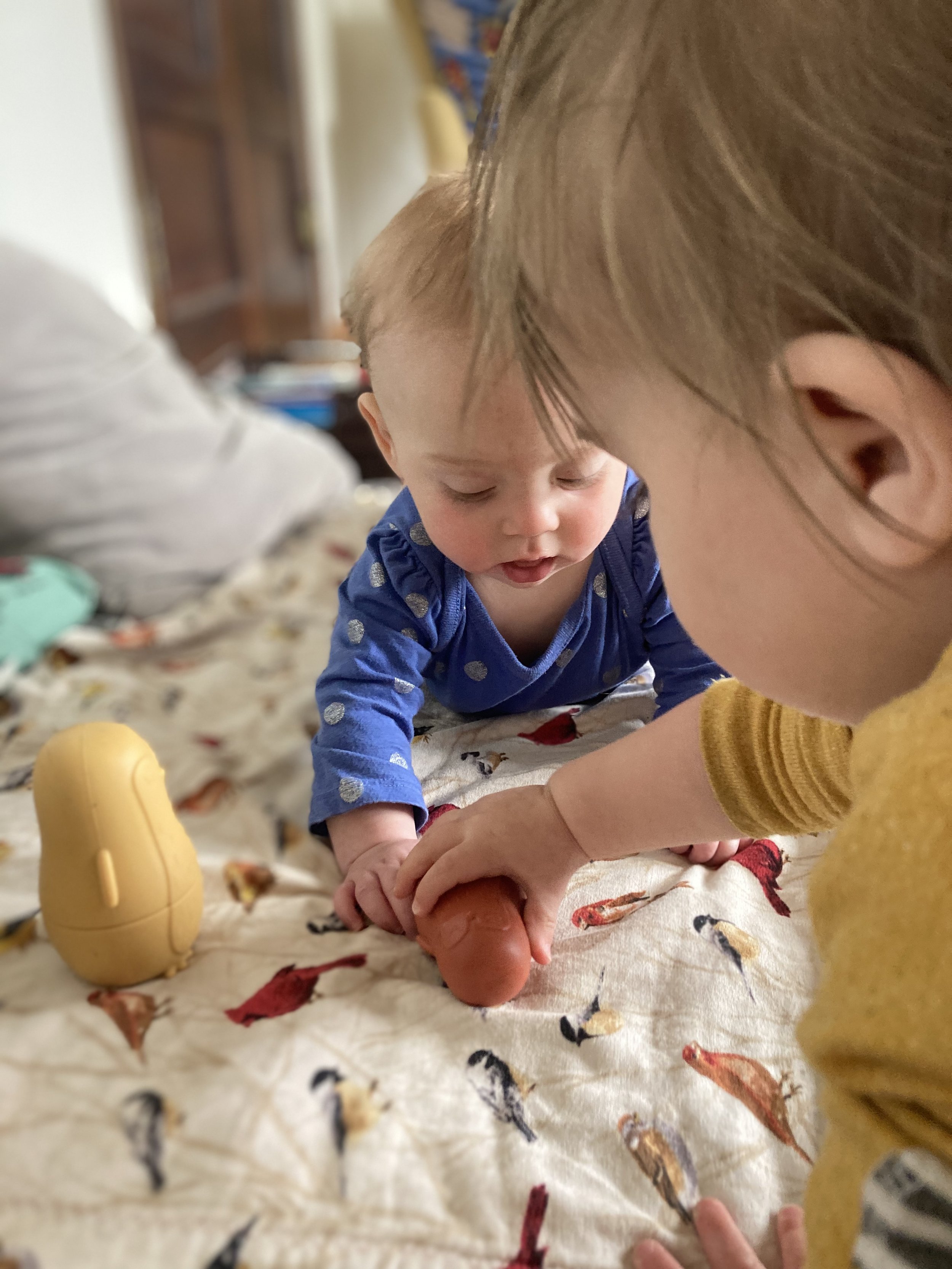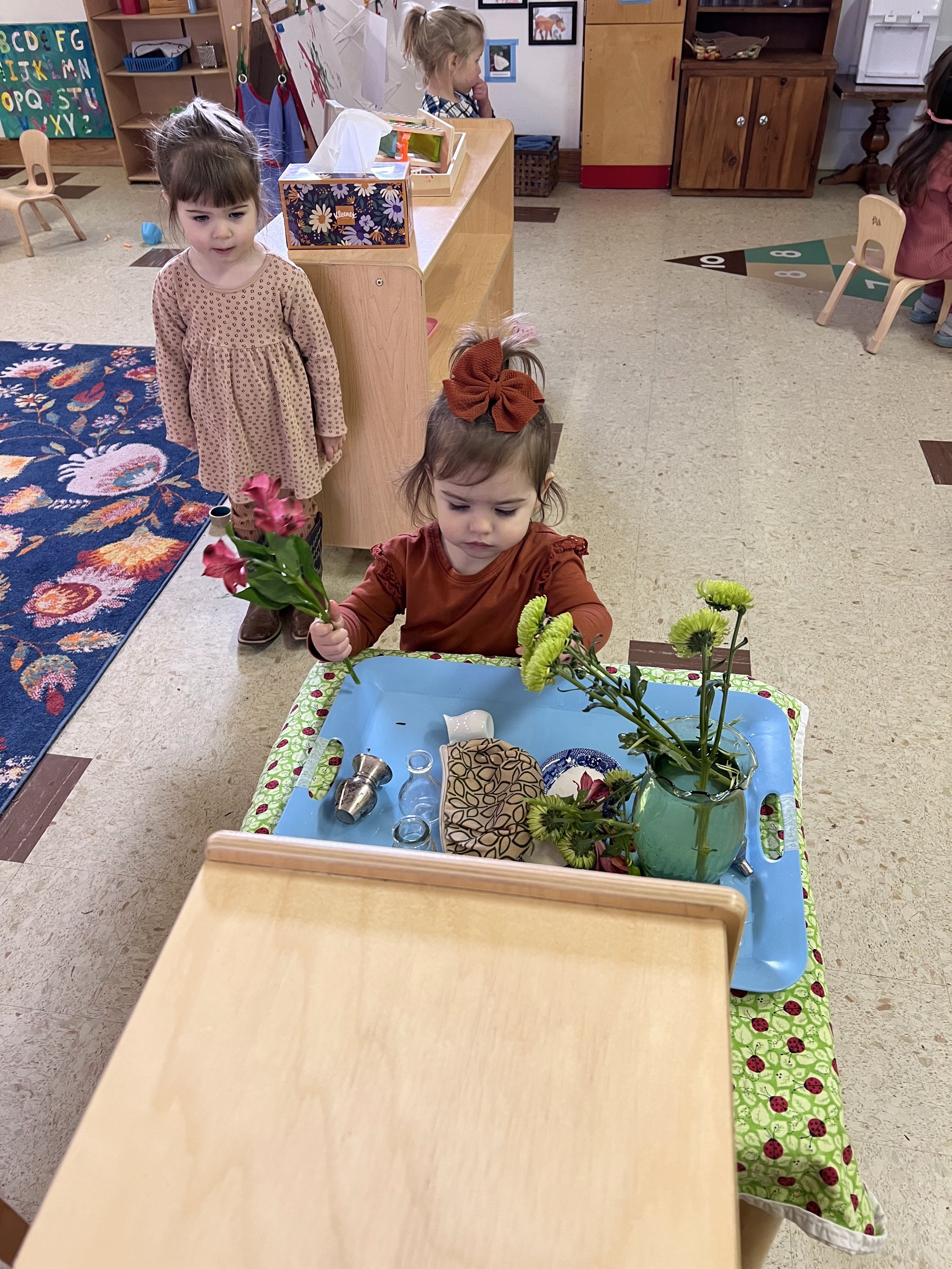Core Message: Self-care is not selfish—supporting others begins with caring for yourself.
I remember before Lou was born, I was adamant that our big to-dos as a family wouldn’t change. For the most part, this is true: we still explore nature, work hard, play hard, and love deeply. What’s changed is how we balance these priorities. Rest, once abundant, is now fleeting. Life feels more primal—focused on tending to our children and maintaining our home. Yet this stage of life, busy and demanding as it is, also calls for something deeper: honoring our emotional, physical, and spiritual needs so we can show up for our children as whole, balanced people.
We often love our children so deeply that we sacrifice our own needs—giving up comfortable sleep so our child can sleep in our beds; living surrounded by stuff and trash and more stuff; giving up entire hobbies or dreams to clean up said stuff and prepare uneaten food. It is exhausting! I am particularly feeling being surrounded by stuff and trash and more stuff! Combined with the frigid temperatures the past couple of weeks, I am significantly more irritable than normal.
I yelled and slammed a Valentine’s card due to a miscommunication over a single misplaced card that happened as we were walking out the door to school. I thought I was alone in the house, but Lou had come back in because—once we knew which card had been misplaced—she knew the right place to look. I appreciated her help and felt embarrassed over my behavior. Two things happened because of this:
I apologized to both of my children for yelling. We talked about what we will both do differently in a situation of miscommunication.
I knew that plans for fun would be put on hold until our girls helped us clean the house.
I did step one within the next 10 minutes. It’s been two days, and I still haven’t communicated that step two will be happening. However, it is now the weekend, and we have time for leisure, which will be spent leisurely cleaning the house, installing a doggie door and a shelf or two, donating a box of stuff, and occasional dance parties and tickle monster attacks.
What Does Balance Look Like?
Balance looks different at every stage of life. Before children, exploring nature meant months-long hikes. Now, it’s teardrop camping with Duke and Daisy—and a once-a-year backpacking weekend with friends. Those weekends away are invaluable. Preparing for them shows my daughters the importance of planning and prioritizing my well-being. Sharing stories and photos afterward deepens our connection. Returning home, recharged and joyful, lets me give my best self to them.
Balance also happens in the small, everyday moments. Recently, I was cleaning the kitchen when “Murder on the Dance Floor” by Royel Otis came on. I love dancing, so I started moving as I put food away. My daughters came running, giggling, and soon we were in the living room. What started as a spontaneous dance party quickly turned into a jump-on-mom-beg-to-be-picked-up fest. My frustration grew—I could feel my face heating and my voice sharpening.
Instead of letting it escalate, I paused the music and set some ground rules: “I need space for my body to dance. Let’s try these moves together. If you jump on me, it’ll be time to brush our teeth.” We danced to three more songs, and it was fun for everyone. By noticing my limits and addressing them respectfully, we turned a potentially negative moment into a joyful one.
This moment of self-regulation is precisely what research on emotional intelligence emphasizes. Dr. Marc Brackett, founder of the Yale Center for Emotional Intelligence, describes how emotional regulation is key to fostering positive relationships—especially between parents and children. His work highlights that children learn emotional intelligence primarily by watching the adults in their lives manage their own emotions (Brackett, 2019). In moments like these, I am reminded that teaching my children emotional intelligence starts with me.
The Power of Boundaries
Setting boundaries as a parent isn’t about control—it’s about creating clear expectations with kindness and mutual respect. Research from Dr. Brené Brown underscores that boundaries are essential to maintaining healthy relationships; they allow us to set expectations that prevent resentment and foster mutual respect (Brown, 2010).
When we don’t establish clear boundaries, frustration builds, and we react suddenly—often in ways that confuse or upset our children. Recently, I yelled at Vivian when she caught me putting away Christmas gifts. She cried for 30 minutes—not just because I yelled but because it came out of nowhere. If I had calmly told her earlier, “Please don’t go into my closet; that’s my private space,” she might have listened. If she didn’t, my reaction wouldn’t have been such a shock.
Boundaries are essential for building trust. They teach children what to expect and how to navigate the world.
At the dinner table, for example, young children often test limits: Can I spill my milk? Do I need to sit in my chair? What happens if I refuse to eat?
Take spilled milk. I’ll help a child clean it up by going together to get a spill rag, drying the milk, and putting the laundry away. If they resist helping, I’ll offer choices: “Do you want the blue rag or the red rag? Do you want to dry the table or the floor?” If it was an accident, I’ll offer more—just a small amount. If it’s intentional (like when they lock eyes with you and tip the cup), I say, “I saw you pour your milk out. It looks like you’re all done with milk.” Consistently responding in this way helps children learn what’s expected while keeping the atmosphere calm and respectful.
These boundaries get messier as your child gets older—learning that the black-and-white line is sometimes gray and fuzzy. Our boundaries revolve around safety and respect. This remains true as our girls age—stop means stop; tell the truth; try our best.
Our third-grader’s guidance counselor recently told her class, “You guys are capable of solving social problems without your parents.” This has been a game-changer in our house. Just yesterday, the girls were in their room, and I heard Vivian getting huffy. It didn’t last long, so I didn’t step in. Lou came out a few moments later, and I asked her if everything was okay. Her response, with a big smile: “Vivian got mad at me, but we talked. I was able to solve my problem without you.” She felt so proud of her emotional intelligence and grace and courtesy skills.
The Bigger Picture
Ultimately, supporting our children starts with supporting ourselves. Research has shown that parental well-being directly influences children’s emotional regulation and resilience (Gottman & Declaire, 1997). By honoring our needs and modeling balance, we show them how to live a life that’s full and joyful, even amid challenges. For me, this means stepping back from the constant demands of parenting to recharge—whether it’s a dance party that honors my limits or a weekend away that fills my spirit.
When I think about the life I want for my daughters, it comes down to this: I want them to grow up balanced. I want them to know that their needs matter and that it’s possible to meet those needs while living with kindness and respect for others. To teach that, I must live it myself.
What does balance look like in your life? What boundaries have helped you create harmony in your family? Share your thoughts and ideas in the comments—we’d love to hear them!
Research References:
Brackett, M. (2019). Permission to Feel: Unlocking the Power of Emotions to Help Our Kids, Ourselves, and Our Society Thrive. Celadon Books.
Brown, B. (2010). The Gifts of Imperfection: Let Go of Who You Think You’re Supposed to Be and Embrace Who You Are. Hazelden Publishing.
Gottman, J., & Declaire, J. (1997). The Heart of Parenting: How to Raise an Emotionally Intelligent Child. Simon & Schuster.












